Whilst I’ve so far mostly worked on the Natural History Collection, I’ve recently been taking a deep dive into our Anthropology collection too.
This work has opened my eyes to the fascinating links we can make between these collections, and what they can tell us about human impact on the world around us.
Since the Natural History Gallery closed in March we have been preparing for the exciting redisplay of the Gallery. Now, over 5000 objects later, we can now proudly claim to have completed the decant of the old Gallery!
Each specimen has been carefully packed away. Some will be returned to the newly refurbished gallery when it reopens. Others will take a break from the spotlight at the Study Collections Centre (SCC), where we store the parts of our collection that aren’t on display.
We’re currently doing showcase layouts. This involves putting specimens on a large table so we can see what they will look like in their proposed formation for the new Gallery.
To do this, we work alongside the curatorial, conservation and exhibitions teams to make sure everything will be looking its best for visitors. It’s so exciting to see how things will look, and I can’t wait for all of you to see it when the Gallery re-opens!
Being at the SCC means that I’ve been lucky enough to work with our Anthropology collection as well as the Natural History specimens I have come to know and love.
It has been a real privilege to see objects from around the world and learn more about how to care for them. Something I didn’t anticipate was how many links there could be between these collections and how much of an impact nature has had on global cultures throughout history.
Florals for fashion? Groundbreaking
This European tortoiseshell hairband which dates from around 1757 highlights how natural materials and animal products were used to make desirable accessories.
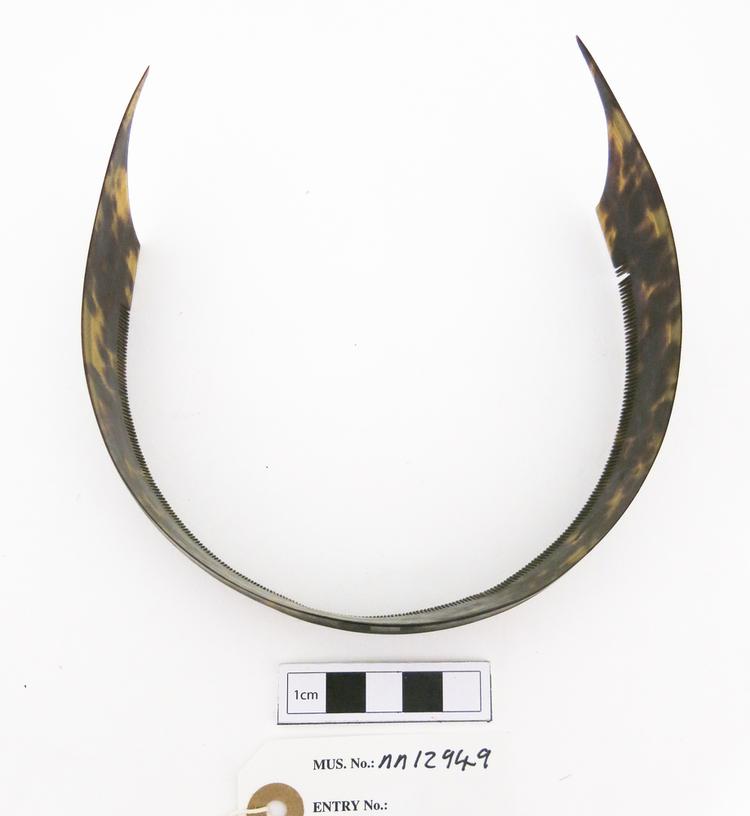
headband (head ornament); stage of manufactures (clothing: headwear)
Anthropology
This use of nature as inspiration can be seen across the world and during many periods of history. For example floral patterns were very popular choices for dresses in Europe in the mid-late 1700s.
These silk shoes from 19th-20th century China embroidered with the image of narcissus flowers are also fabulous examples of how designers and makers used natural materials and images in their work.
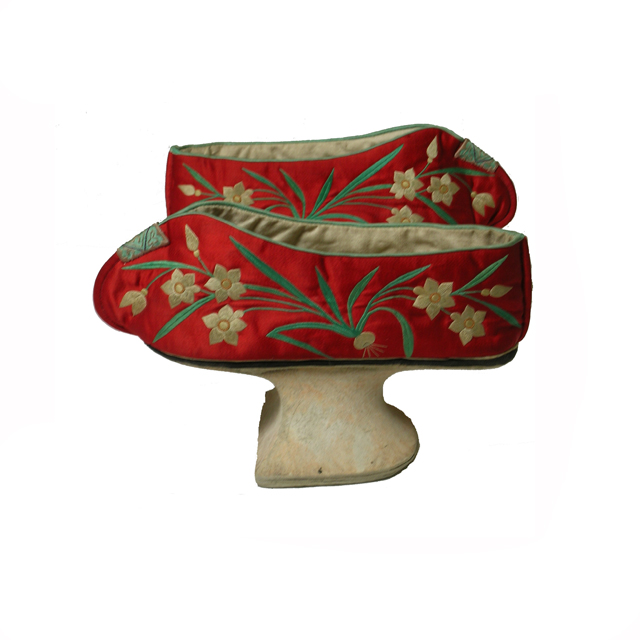
shoe
Anthropology
Party wear
Makers also used the properties of natural materials in their designs. Before synthetic materials like plastic, sequins and glitter were invented, people used both living creatures and minerals to make clothing and accessories shine.
This table-covering from 19th century Delhi Province features elytra throughout the fabric. These are iridescent beetle wings. Under candle or lamp light, the beetle wings would shimmer and reflect different colours depending on how the light hit them.
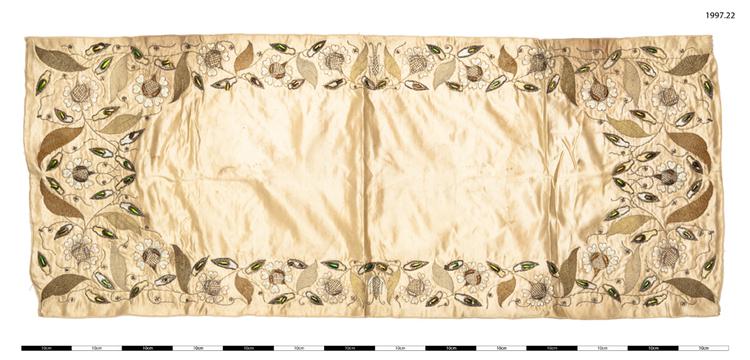
sample (textileworking: needlework)
Anthropology
The use of silk thread to create the floral pattern would also shimmer under candlelight. This dress from Pakistan contains ground mica. Mica is a shimmery mineral found in rock and still used today in cosmetic products such as eyeshadow. It gives the garment a sparkly appearance.
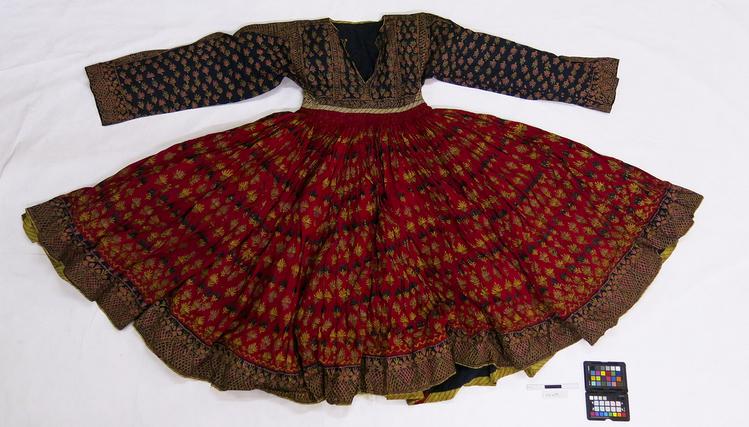
Giving clothes structure
Natural materials were also very important in creating fashionable silhouettes throughout history.
One of the most well-known examples of this is the use of baleen, which is a long and bendy material which comes from the mouth of a whale. It was used to create structured garments like petticoats, corsets and stiffened collars.
Materials like these were essential elements of a person’s wardrobe. Some of the most recognisable 19th century fashions like the high collars of the 1810s and wide skirts of the 1850s and 60s relied on them.
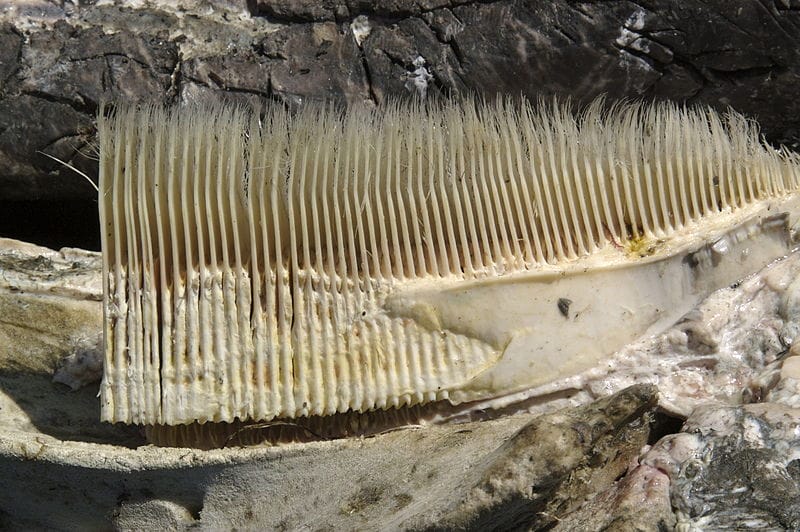
By jkirkhart35 via Creative Commons 2.0
The problem with fashion
This appreciation of natural materials and the natural world was a major part of fashion history. People knew what materials could do and took inspiration from things they found beautiful.
However, this sometimes led to people exploiting the living things and materials that were so prized.
Growth of the whaling industry pushed the species to the brink of extinction. More whales in the US being killed in the early 1900s than in the four hundred years before it. Mica is still mined intensively today for cosmetics, contributing to deforestation and habitat destruction through land clearances.
The same love we have for the natural world can damage it, if we do not take measures to protect living things and their habitats.
Working on the Nature + Love Project – which aims to highlight the need to protect and appreciate the natural world we all share – has opened my eyes to human impact on other species and the environment. The project has helped me draw connections between both the Anthropology and Natural History Collections. Both of these collections highlight the complex relationships humans have with nature.
Throughout history, nature has been a source of endless inspiration. But our appreciation for nature’s beauty and the properties of natural materials have also caused us to exploit it.
I hope that the work we’re doing to prepare the Natural History Gallery for redisplay will help visitors see both sides of this relationship. I hope it will act as a call to action to protect the world that we as humans love as well as need.


